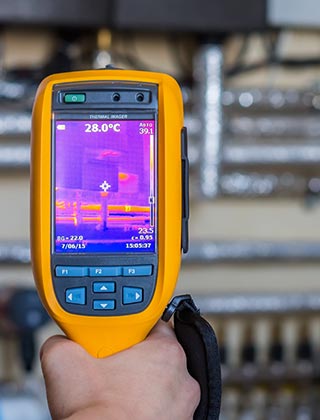MENU

If indoor mold is growing, it means there is water somewhere it shouldn't be. We use moisture and leak detection techniques to identify wet areas in your home, whether from a little bit of extra moisture or humidity, or a bona fide leak in a pipe or in your foundation.
Using advanced technology and infrared imaging, moisture and leak detection plays a critical role in pointing to where to collect air samples and surface samples from for laboratory analysis. It also acts as another source of vital information in a mold inspection, highlighting where the water is coming from and needed repairs to be made during mold remediation.

This is not a comprehensive list of potential leak areas, however, these are the most prevalent spots that are unfortunately often neglected or under-maintained. Moisture and Leak can cause mold in your home. If you notice it or suspect it, contact O2 Mold Testing